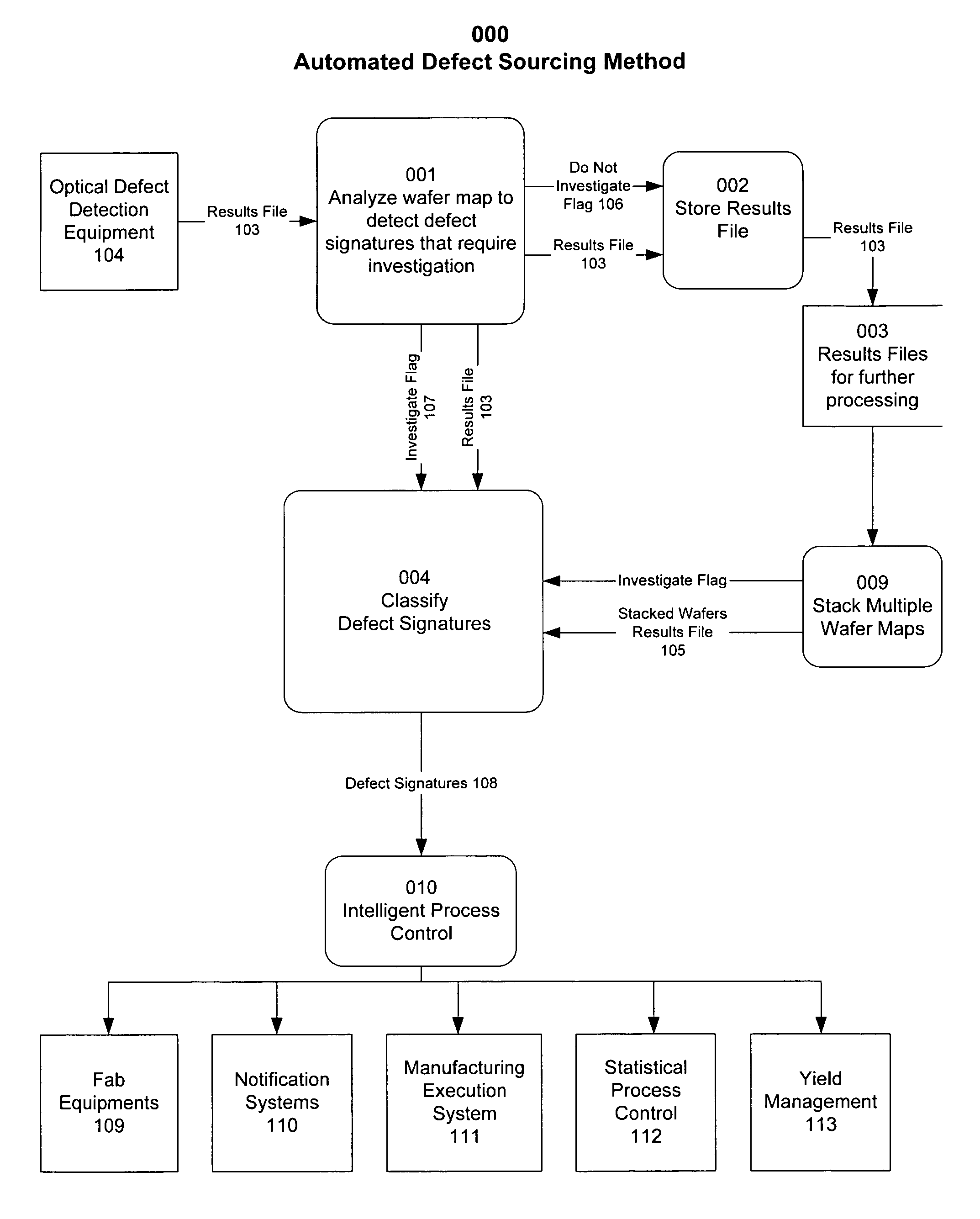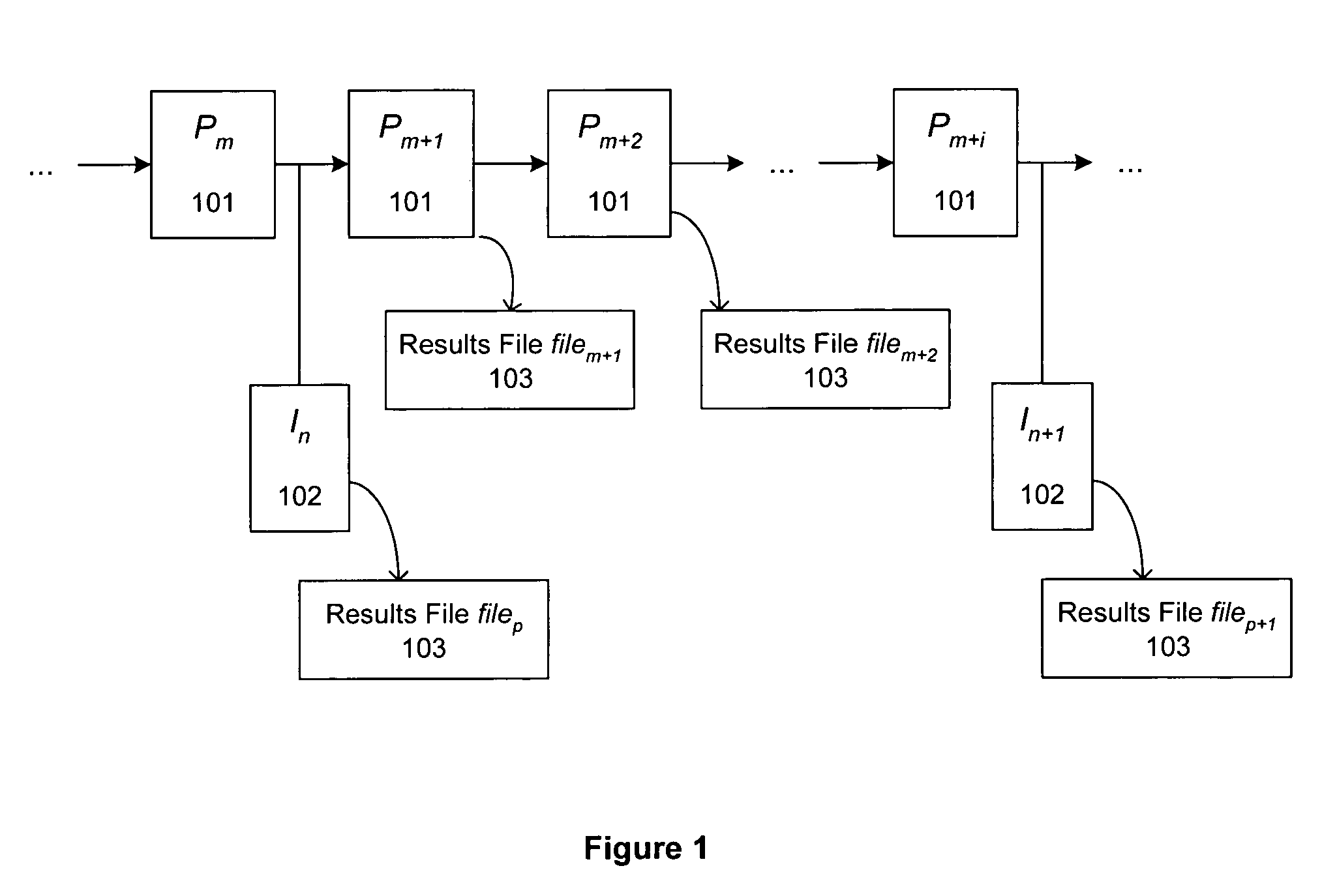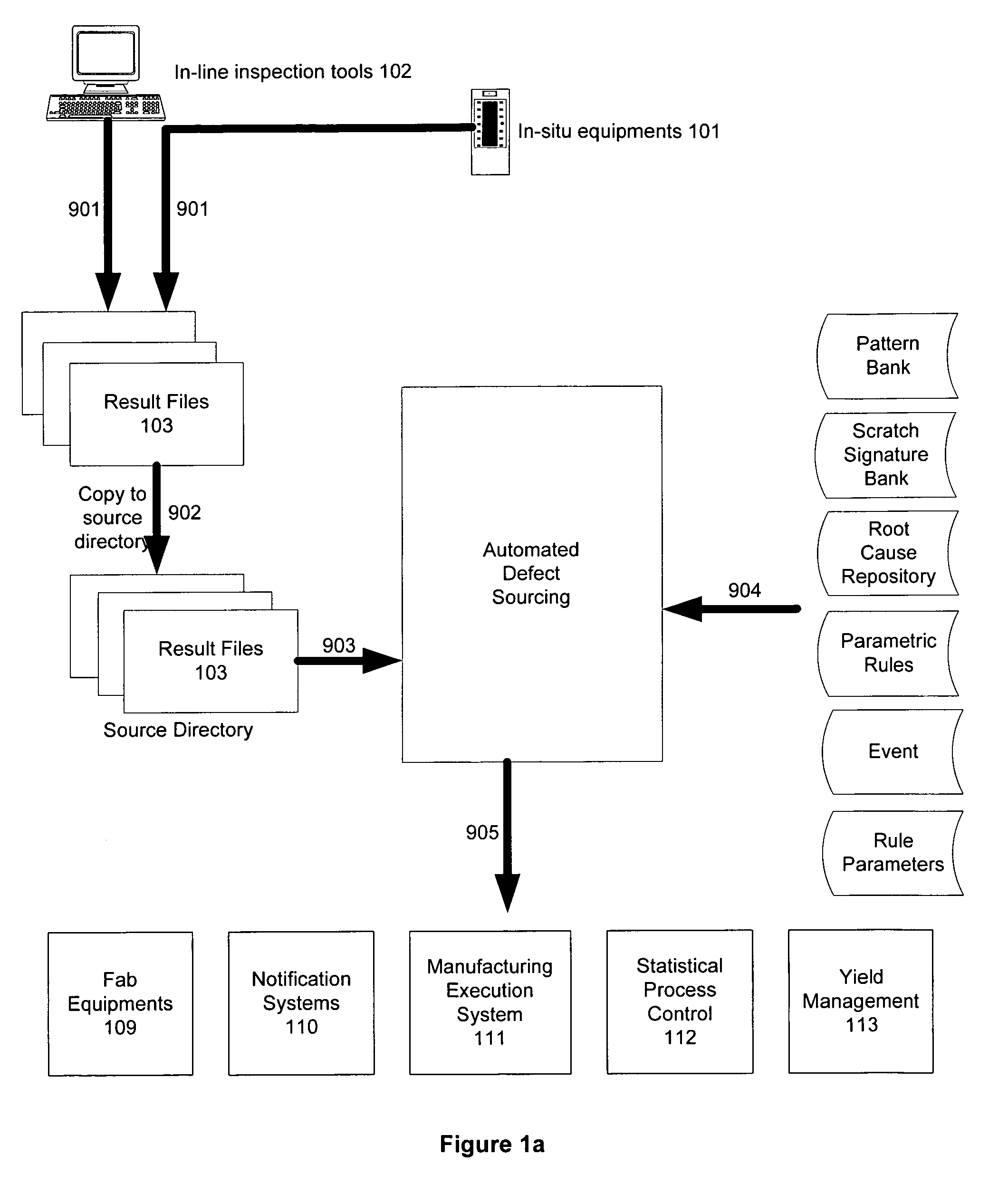Automated sourcing of substrate microfabrication defects using defects signatures
a microfabrication and defect technology, applied in the detection of semiconductor fabrication defects, semiconductor/solid-state device testing/measurement, instruments, etc., can solve the problems of human identification of defect source, primitive detection of defect signature, and laborious and time-consuming effor
- Summary
- Abstract
- Description
- Claims
- Application Information
AI Technical Summary
Benefits of technology
Problems solved by technology
Method used
Image
Examples
Embodiment Construction
[0052]The following definitions serve as a glossary of terms as used herein:
[0053]Defect: A pit, tear, groove, inclusion, grain boundary, or other surface feature anomaly that is either characteristic of the material or a result of its processing and that is not a result of the sample preparation. (examples: particle deposited on substrate; scratch / streak on wafer; lithographic error; non-uniform deposition, etch or planarization; excessive or inadequate deposition, etch or planarization).
Defect Cluster: A grouping of defects detected on a wafer surface that have commonality in position, size, orientation and / or one or more other measurable attributes.
Concentrated cluster: A dense grouping of non-random defects that comprises micro-clusters, scratch clusters and repeating litho clusters.
Micro-cluster: A grouping of concentrated defects contained totally with a single die. When an envelope is drawn around the micro-cluster, the major axis of the envelope is much smaller than both the...
PUM
 Login to View More
Login to View More Abstract
Description
Claims
Application Information
 Login to View More
Login to View More - R&D
- Intellectual Property
- Life Sciences
- Materials
- Tech Scout
- Unparalleled Data Quality
- Higher Quality Content
- 60% Fewer Hallucinations
Browse by: Latest US Patents, China's latest patents, Technical Efficacy Thesaurus, Application Domain, Technology Topic, Popular Technical Reports.
© 2025 PatSnap. All rights reserved.Legal|Privacy policy|Modern Slavery Act Transparency Statement|Sitemap|About US| Contact US: help@patsnap.com



